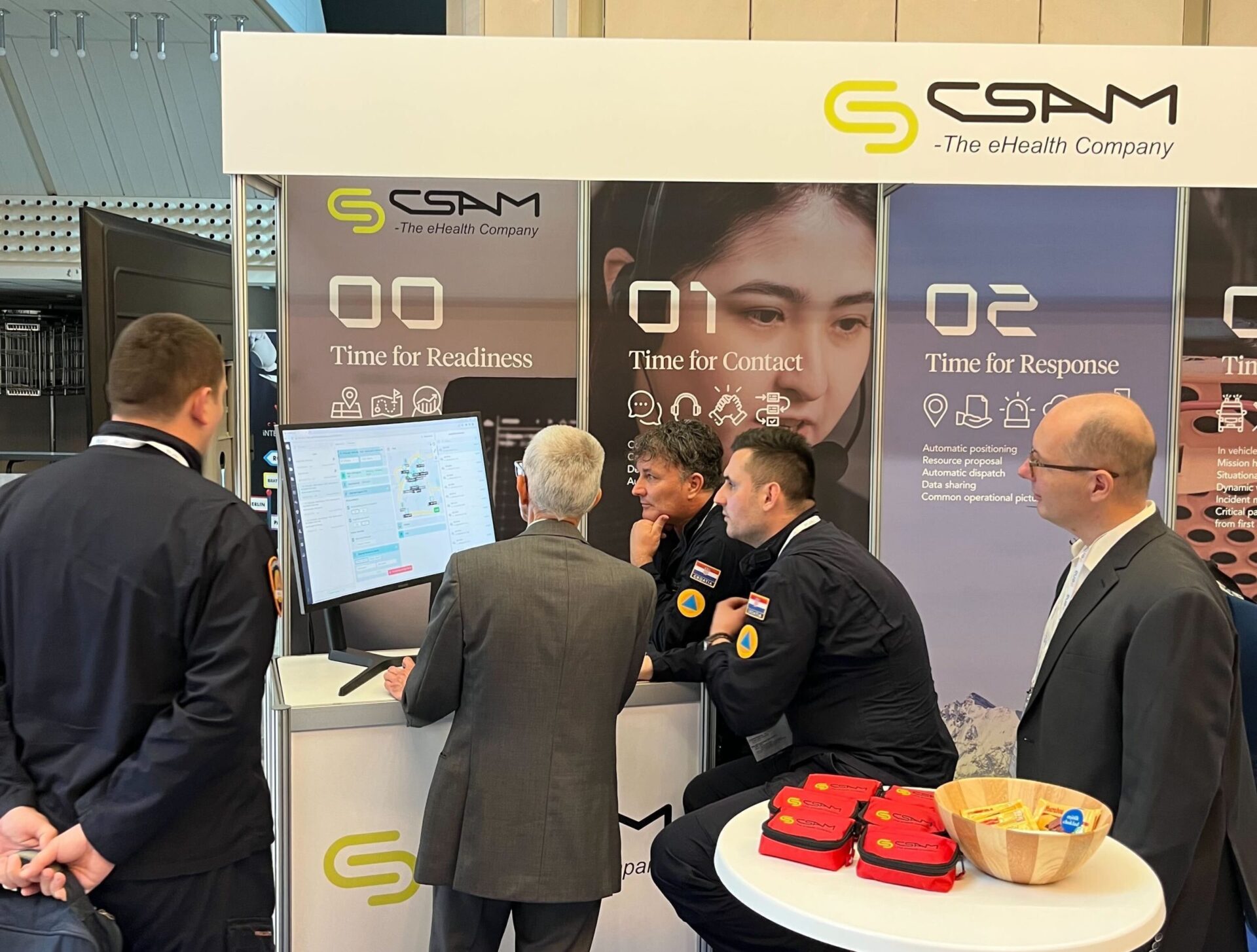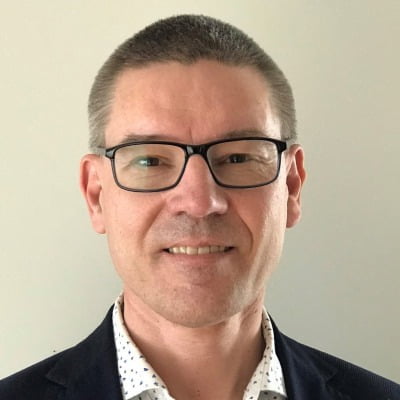Having recently participated at the influential European Emergency Number Association (EENA) Conference, we want to shine a spotlight on one of the organisation’s principal focus areas – Next Generation 112 (NG112). The NG112 initiative was central to the discussions throughout the event, with the aim of driving the progress and widespread adoption of more advanced emergency response technology across Europe.
A key player in the European emergency services sector, EENA is recognised as an agenda-setting organization with a distinct vision for the future of European emergency services technology and infrastructure. Today, the EENA community includes more than 1500 emergency services representatives from over 80 countries and more than 100 solution providers, as well as researchers and Members of the European Parliament. NG112 is a key pillar of the organisation’s vision. It demonstrates how EENA believes new technologies, many of which are readily available and implementable, can create a more effective, efficient, and connected European emergency services landscape and improve public safety.
In this article, we unpick NG112 technology, explore the benefits it could provide European emergency services, and examine what a system powered by NG112 solutions may look like. But first, we need to set the scene and describe the contemporary European emergency services landscape. After all, to understand where we are going and what that journey involves, we must understand where we are right now.

Dissecting the European EMS landscape
Currently, the European emergency medical services (EMS) landscape is remarkably fragmented. Despite operating under a single government authority, the EU, there is little collaboration or standardisation across borders. In many cases, there is considerable fragmentation within national borders, too. Regional authorities within a single country can operate on wildly divergent and incompatible systems and technologies, making it difficult to coordinate emergency response effectively.
This fragmentation manifests most clearly in the variety of emergency numbers in operation. While 112 is a free-of-charge emergency number available 24/7 across all EU member states, it has serious competition from local numbers. For instance, in France, there are 15 different medical emergency numbers, 17 police numbers, and 18 for fire services (EENA). 112 is capable of replacing all these numbers. It would be easier to remember, safer, and more convenient, particularly on a continent where freedom of movement makes border crossings easier than ever.
However, diverse emergency numbers are not the only symptom of EMS fragmentation. Emergency response services also utilise different operating standards and technologies. At the same time, EMS organizations are still largely tied to traditional telephony and voice-based solutions, despite the availability of an array of advanced supplementary digital tools.
In this context, EENA calls for greater standardisation and encourages the adoption of NG112 solutions.
What is NG112 technology?
The NG112 concept encompasses several ideas and initiatives. One particularly important aspect is the standardisation of technical specifications for a common digital NG112 architecture. While it is central to the NG112 project, this article will largely sidestep this discussion and focus on the more engaging side of the initiative – the operational tools and technologies themselves. For readers interested in learning more about the standardisation and NG112 specifications, the EENA NG112 page, the organisation’s long-term NG112 definition, and its Technical Specifications document are all valuable resources.
One of the core principles guiding the NG112 project is the idea that emergency response can be improved by moving beyond voice-only technologies. Consequently, NG112 technology encompasses a range of tools that facilitate digital communication with emergency services. Video technology is an excellent example, but NG112 technology also incorporates location data, photos, images, real-time text, and other digitally-communicated data points.
Essentially, NG112 technology aims to diversify the ways citizens can contact and communicate with emergency services while enriching those services’ abilities to process and leverage the information citizens provide. It hopes to move emergency services beyond their reliance on voice-based communication and embrace digital alternatives that reflect the way citizens and organisations interact in other everyday instances.
But why encourage NG112 adoption? What are the benefits of doing so?
What are the benefits of NG 112 technology?
First and foremost, improved decision-making due to better access to information is the primary benefit associated with NG112 technology. While many industries have already recognised the value of comprehensive data collection, the emergency services sector has been somewhat slower to leverage digital data.
Digital technologies like video and photos can provide decision-makers with the additional information required to make the right call and improve responses. Crucially, we can utilise this information across the response chain. While a dispatcher might benefit from video of an incident, so might the doctor treating those involved. Providing decision-makers at every level of the emergency response process with more information, better insights, and actual context will improve the quality of response.
That said, the benefits of NG112 technology are not limited to operational decision-making. NG112 tools also improve accessibility for citizens. While some services employ basic tools that enable people with disabilities to interact with emergency response numbers, many do not. As a result, a significant proportion of the European population struggles to engage the assistance of responders in an emergency. By providing them with a more diverse range of communication channels, we ensure every individual can seek help.
What would a system based on NG112 technology look like?
If we step back to view the bigger picture, NG112 technologies and infrastructure standardisation are the foundations for an emergency services sector that benefits from end-to-end digital coverage.
By that, we mean a sector in which data collected, insights gathered, and actions taken at the start of the emergency response timeline inform decision-making at the end of the response timeline. As well as at every stage in between. This requires data sharing between different organisations via integrated solutions. In an ideal end-to-end system, data collected by a dispatcher at the start of an incident would be available to those ultimately responsible for discharging an individual from treatment.
Additionally, a system powered by NG112 technologies prioritises process automation. In the EMS sector, we can make significant efficiency gains by automating manual processes and freeing human resources to focus on more nuanced, complex, and valuable work. Automation also reduces the scope for human error, resulting in a safer and more accurate system.
Improved data collection, management, and analysis will also impact emergency services’ ability to plan strategically and maximise the value of available resources. Tools like Omda’s Optima Predict have demonstrated that data-driven strategic modelling solutions have a powerful, positive effect on performance and enable organisations to do more with less and justify investment in necessary resources. NG112 technologies that generate more data inputs improve our understanding of operational realities and allow emergency services to adjust their short and long-term strategies accordingly.

What are the key challenges to implementing NG112 solutions?
Despite the clear benefits of NG112 technology, promoting its adoption means overcoming several obstacles and challenges. Two particularly pressing issues must be addressed if NG112 is to be implemented quickly and effectively.
First, there must be greater coordination and collaboration between technology providers. If major service providers in the sector are unwilling to work to common standards, technical specifications, and goals, there will always be barriers to end-to-end, inter-regional, and cross-border collaboration. EENA has a major role to play in facilitating this collaboration. But success also depends on a certain amount of will and drive from the technology providers themselves.
Second, technology providers must get better at demonstrating the value of their digital solutions to EMS organisations. Businesses operating in the sector must be able to communicate effectively and work closely with those using the solutions. At Omda, one solution has been the introduction of Business Analysts. These highly-skilled analysts know their specific Omda software inside-out and work side-by-side with the customer to realise the platform’s potential. Often, they are embedded within the customer organisation, working a few days a week in the workplace to better understand customer challenges, provide solutions, train employees in platform use, and leverage Omda expertise in other locations or product teams.
Looking beyond NG 112’s immediate future
In this article, we focused primarily on NG112’s immediate future and the tools that are currently ready for implementation. However, many exciting, emerging technologies have the potential to continue progressing EMS systems long into the future.
For instance, AI will undoubtedly be used to automate a growing number of processes and improve decision-making. Likewise, the Internet of Things (IoT) will become increasingly influential. We are already seeing the IoT have an impact with features like silent calls in vehicles – whereby vehicles automatically contact emergency services and provide location data in the event of an accident. As more and more everyday appliances and devices join the digital network, there will be more and more opportunities to feed valuable data into EMS systems to inform the emergency response.
However, these developments depend on the successful implementation of NG112 architecture, standards, and technologies. During the EENA 2023 conference, significant focus was given to the measures needed to make the NG112 initiative a reality. We believe the NG112 project will have an enormously positive effect on the European emergency response sector if providers and EMS organisations can work together to overcome the challenges detailed above. With this in mind, we look forward to continued collaboration on NG112 as part of the EENA community.
For more information contact:
Anders Sandell
CTO, Public Safety
anders.sandell@omda.com